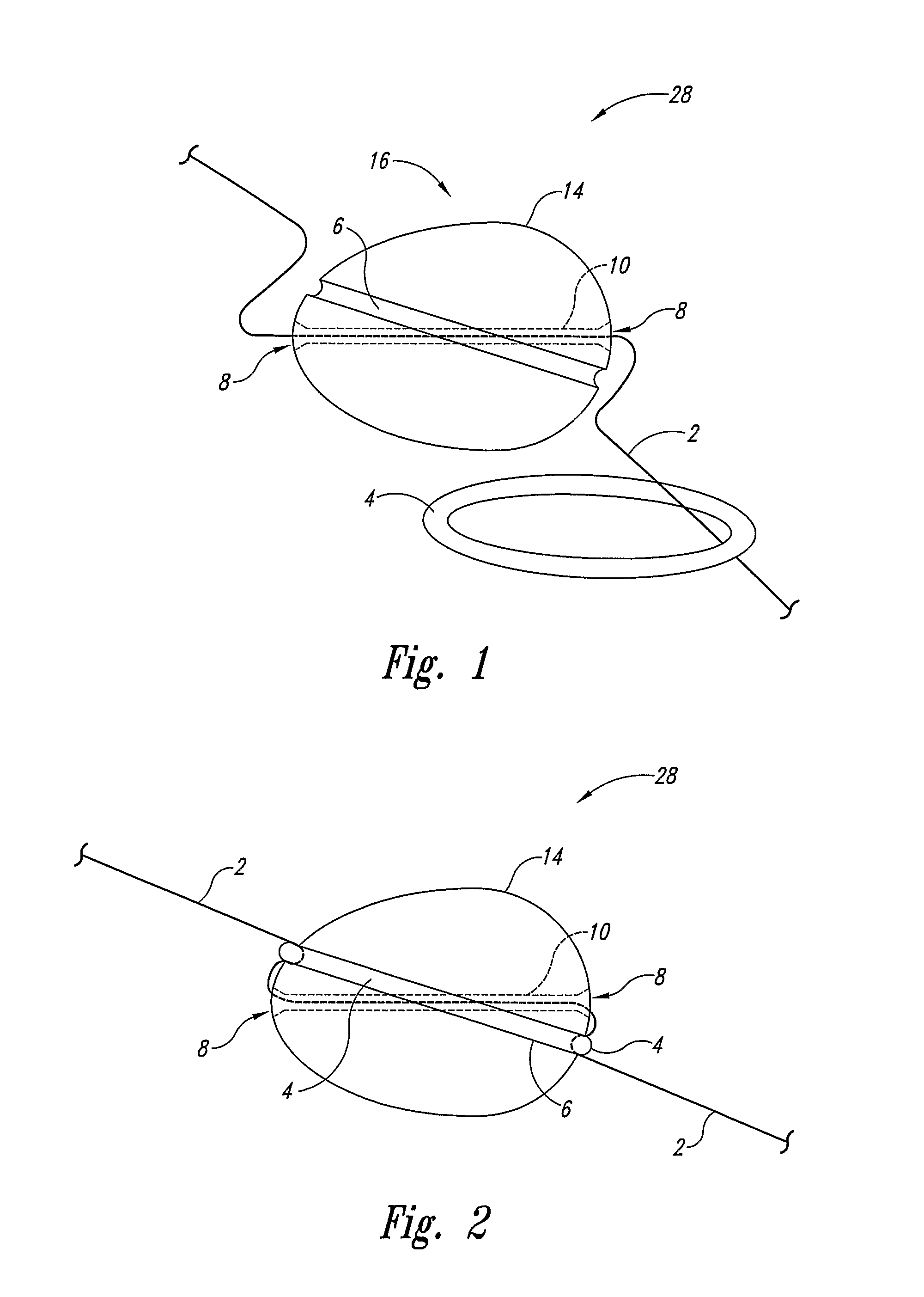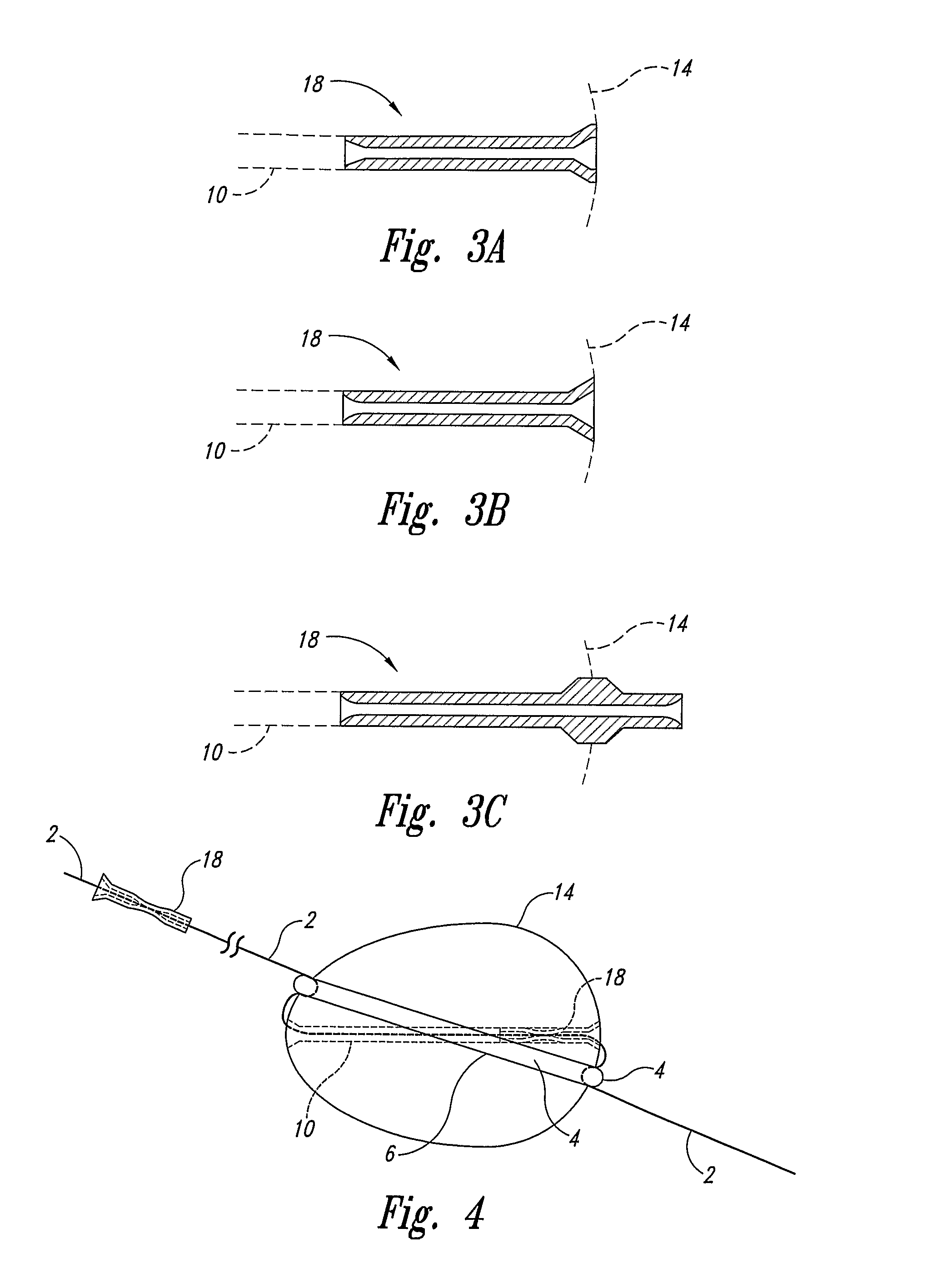Reversibly disengaging slidable strike indicator, positioning system, and method of using same
a technology of slidable strike indicators and positioning systems, which is applied in fishing, other angling devices, animal husbandry, etc., can solve the problems of severe line retrieval problems caused by prior art strike indicators, reduced catchable fish numbers, and difficult if not impossible capture of fish in low-profile and/or restricted fishing contexts. to achieve the effect of limiting slidable travel and practicality
- Summary
- Abstract
- Description
- Claims
- Application Information
AI Technical Summary
Benefits of technology
Problems solved by technology
Method used
Image
Examples
Embodiment Construction
[0035]Particular aspects of the present invention provide novel disengagable strike indicators that are attachable, by novel means, to a fishing line at a user-selected position, and, upon disengagement therefrom, are slidable along the fishing line.
[0036]Additional aspects provide novel disengagable strike indicator systems that comprise, in addition to a disengagable strike indicator, at least one strike indicator stop member that is attachable at a user-selected fixed position along a fishing line, and is also engagable with the inventive strike indicator main bodies to limit slidable travel of a disengaged strike indicator along the fishing line.
[0037]Further aspects provide novel methods for fishing, comprising fishing with an inventive disengagable strike indicator, or the inventive strike indicator system.
[0038]Yet further aspects provide novel methods for effective and efficient fishing with a strike indicator at a depth greater than the length of a fishing rod, comprising f...
PUM
 Login to View More
Login to View More Abstract
Description
Claims
Application Information
 Login to View More
Login to View More - R&D
- Intellectual Property
- Life Sciences
- Materials
- Tech Scout
- Unparalleled Data Quality
- Higher Quality Content
- 60% Fewer Hallucinations
Browse by: Latest US Patents, China's latest patents, Technical Efficacy Thesaurus, Application Domain, Technology Topic, Popular Technical Reports.
© 2025 PatSnap. All rights reserved.Legal|Privacy policy|Modern Slavery Act Transparency Statement|Sitemap|About US| Contact US: help@patsnap.com



